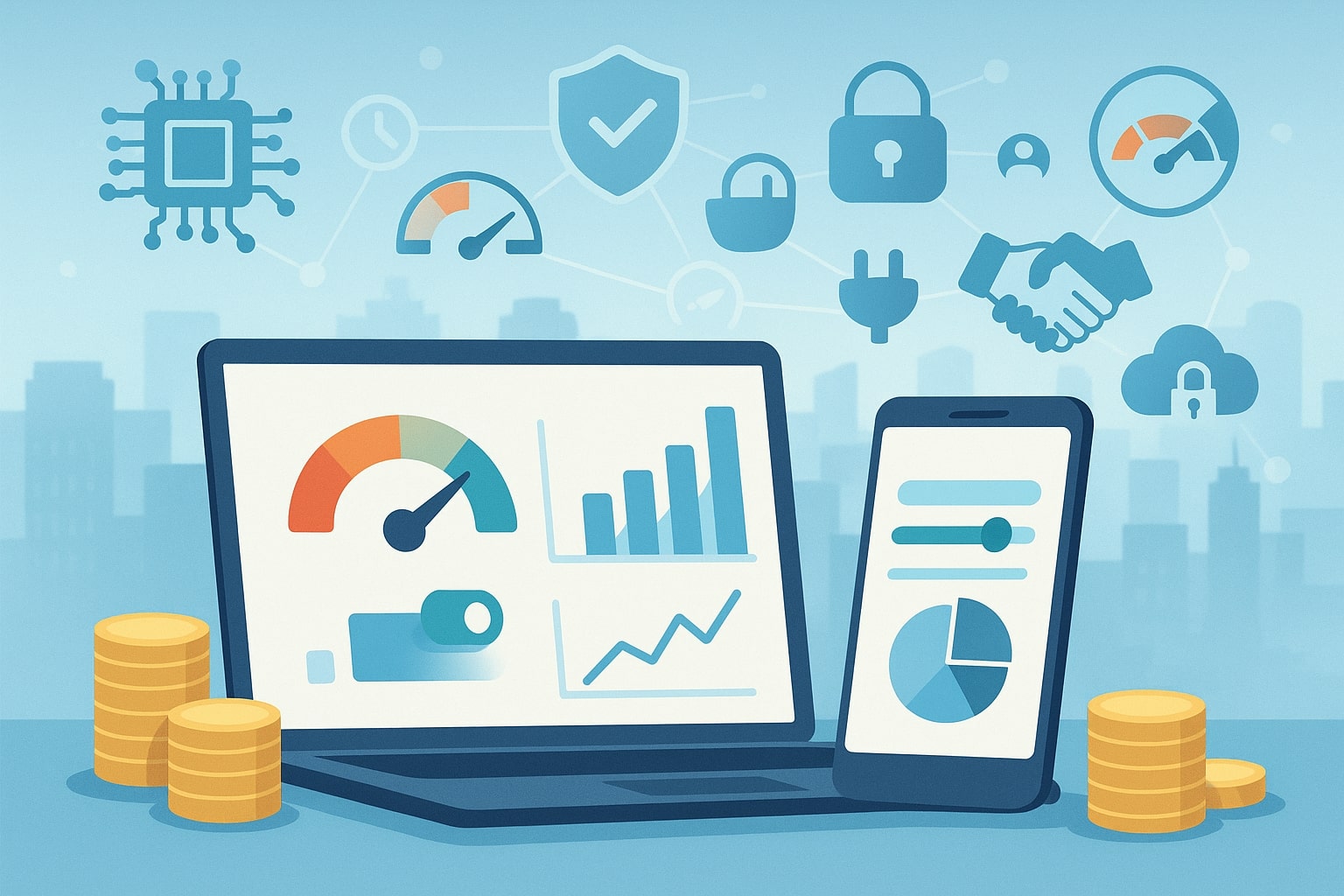
Trends in Online Lending: What to Watch This Year
The online lending sector has seen explosive growth and innovation, fundamentally altering the consumer and business credit landscape.
Digital lending platforms now account for a significant share of U.S. loan originations, driven by faster approvals, convenient online processes, and sophisticated data analytics.
In fact, one analysis estimates U.S. online loan originations (across personal loans, small business loans, mortgages, credit cards, and other credit) reached roughly $925 billion in 2023 – nearly triple the volume in 2015.
As we enter 2025, trends in online lending include continued expansion of fintech market share, new regulatory scrutiny, and cutting-edge technology applications.
This article explores the latest data and trends in online lending (with a focus on the United States) that business leaders, fintech professionals, investors, and consumers should watch this year.
Figure: Growth of the U.S. online lending market, 2015–2027 (projected). The market has expanded rapidly, from a few hundred billion in 2015 to roughly $925B by 2023.
Across loan categories, online lenders have captured market share from traditional banks. For example, consumer installment loans surged in the past few years: data from the New York Fed show U.S. personal installment loan balances rising from about $146 billion in 2021 to $232 billion by 2023.
Fintech-originated personal loans accounted for roughly $50 billion of the total personal loan market in 2022 (about 14% of $356B total).
Industry analysts project this growth will continue – one market report forecasts the U.S. digital lending market reaching ~$303 billion by 2025, with a compound annual growth rate (CAGR) of about 13% through 2030.
Key Drivers of Growth in Online Lending
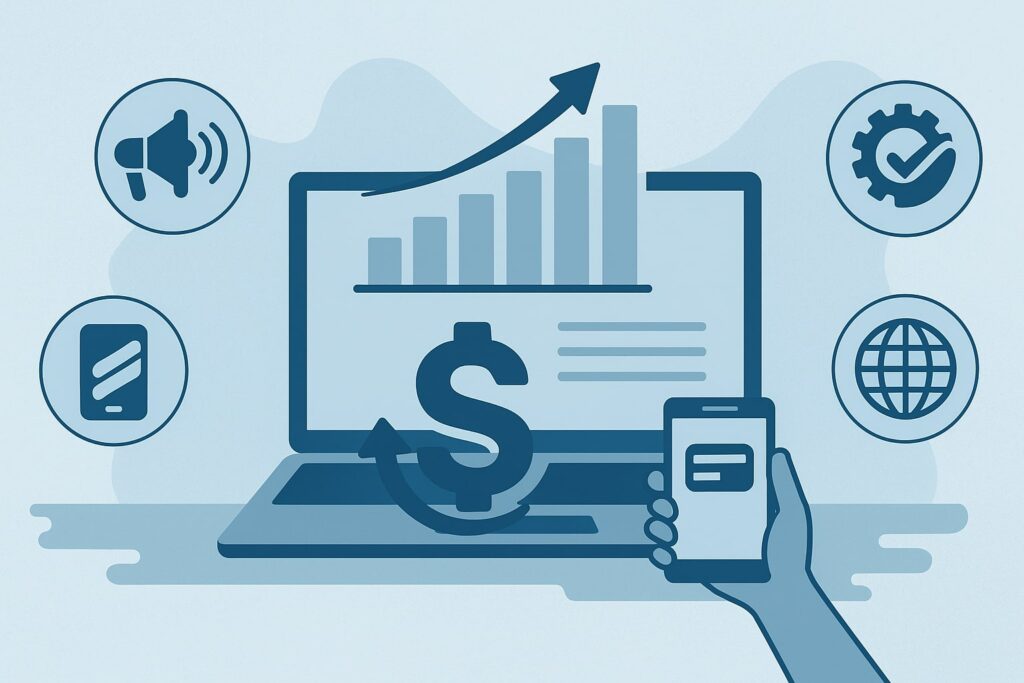
The expansion of online lending reflects several converging factors. Technology advancements – notably AI, mobile platforms, and APIs – allow nonbanks to automate credit underwriting and reach borrowers online.
For instance, AI-driven credit-scoring models now achieve roughly 93% accuracy (much higher than older models) by using alternative data (such as utility payments, real-time bank transactions, even social data).
This alternative data usage lets online lenders extend loans to consumers with limited credit histories. As one analysis notes, machine-learning models trained on new data sources can underwrite “thin-file” borrowers and expand credit access while managing risk.
Other key trends include:
- Embedded Finance & Seamless Credit: Loans are increasingly “embedded” into non-financial apps and e-commerce platforms.
For example, “Buy Now, Pay Later” (BNPL) point-of-sale loans are offered at online checkout, and lending offers appear inside vertical SaaS (software) platforms.
These embedded credit services smooth the borrowing process and drive new usage. (BNPL usage, in particular, has grown rapidly – see below.) - Real-Time Payments & Faster Funding: New payment rails like FedNow (launched in 2023) enable instant funding of loans.
One market report highlights FedNow’s impact: immediate payments can boost same-day loan funding, accelerating digital origination processes. - Pandemic-Era Digital Adoption: COVID-19 permanently changed borrower behavior. Consumers and small businesses became more comfortable with online lending during the pandemic, and many continue to expect quick, digital-first loan processes (loan applications, servicing, etc.). This behavioral shift underpins continued online lending growth.
- Investor Capital & Securitization: Despite a pullback in fintech VC funding in recent years, investors still see value in loan-backed assets.
Fintech personal loans and SMB loans are increasingly packaged into asset-backed securities, drawing institutional capital that supports platform growth.
As [46] notes, “investor appetite for high-yield personal-loan collateral underpins securitization growth” in digital lending.
These drivers have enabled online lenders to scale quickly. For example, personal loans (short-term installment loans) grew at an estimated ~35% CAGR from 2020–2023, and online small-business loans grew at ~31% CAGR in that period.
Traditional products like online mortgages and student loan refinancing also grew (roughly 16–18% annually). As a result, analysts forecast U.S. online lending originations could approach $2 trillion by 2025 under a high-growth scenario.
Technological Innovations and Platforms
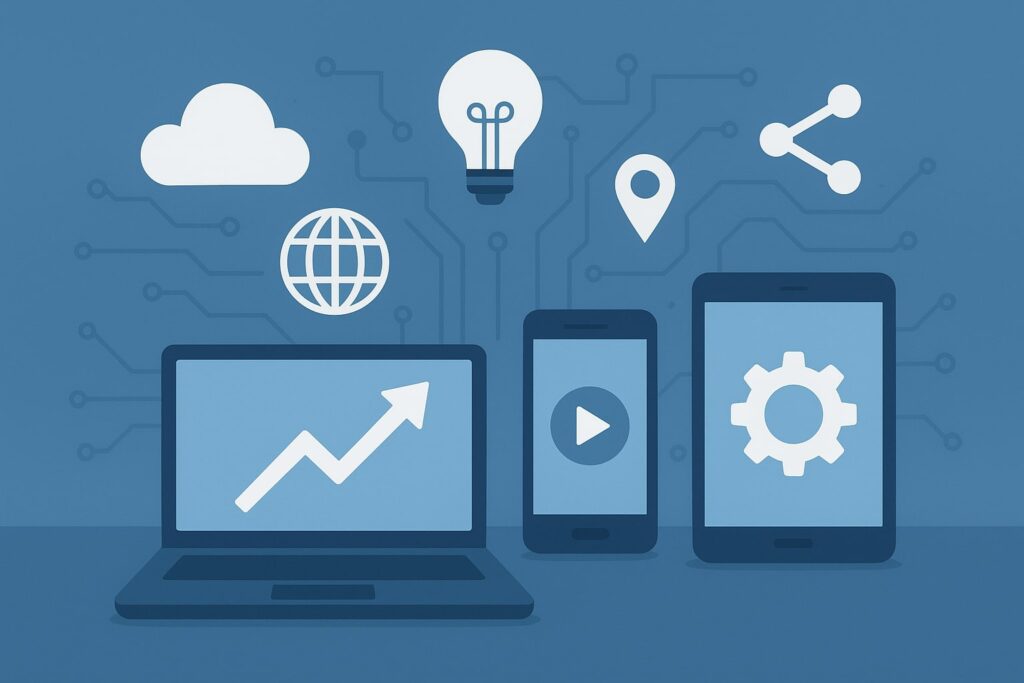
The technological backbone of online lending is rapidly evolving. Key innovations to watch include:
- Artificial Intelligence and Machine Learning: Lenders leverage AI/ML for underwriting, fraud detection, and pricing. Models trained on large data sets can quickly predict creditworthiness. Some lenders (e.g. Upstart, Avant) already rely heavily on AI for loan approvals.
As noted above, new AI models yield high accuracy by tapping unconventional data. AI also personalizes offers: digital platforms can instantly tailor interest rates and loan amounts to each user’s profile. - Cloud-Based Origination Platforms: Online lenders increasingly use cloud software for loan origination and processing. These platforms consolidate data, automate document gathering, and integrate communications (email, chat, video) to speed up decisions.
By moving to the cloud, lenders can scale more easily and meet demand surges. (For example, many fintech lenders hosted on flexible cloud infrastructure can quickly add capacity during application surges, unlike legacy bank systems.) - API Integrations and Open Data: Although the U.S. lacks a formal “open banking” mandate, many lenders are building API connections to banks and third-party data providers.
These integrations allow secure data sharing (with consumer consent) and faster fund transfers. For instance, services like Plaid provide transaction and account data that lenders use to verify income or assets in real-time.
This API-driven integration is becoming standard in the industry, enhancing underwriting accuracy and borrower convenience. - Decentralized Finance (DeFi) and Crypto Lending: A more nascent trend is blockchain-based lending. On DeFi platforms, individuals can borrow crypto by collateralizing assets, often at lower rates than traditional finance.
While crypto lending volumes have been volatile (and some platforms have faced crisis), DeFi highlights a new paradigm of peer-to-peer lending without intermediaries.
Regulators in 2024 signaled tighter scrutiny of crypto lending to protect consumers, so growth in this area may slow. However, it remains an area to watch as crypto markets recover.
Overall, fintech lending platforms are becoming more sophisticated. Many new app-based lenders offer streamlined interfaces: for example, neobanks like SoFi and Marcus by Goldman Sachs provide personal loans entirely online.
Others focus on specific niches (student refi, auto-title loans, etc.) with specialized tech. Lenders also invest in mobile apps that enable account monitoring, payment automation, and digital servicing.
Regulatory and Compliance Developments
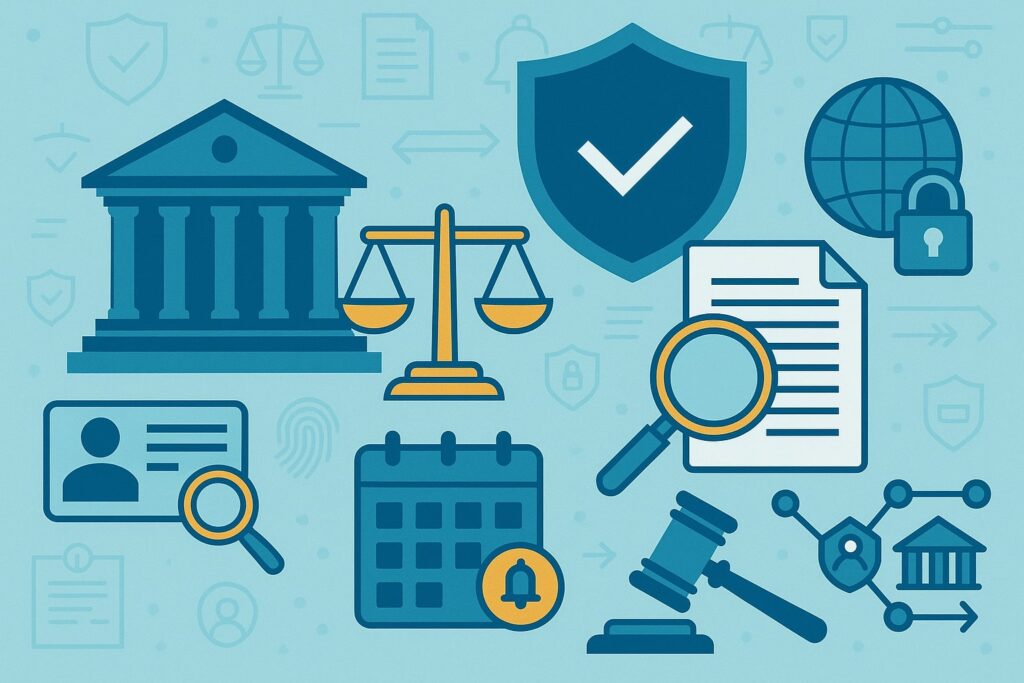
With rapid innovation comes heightened regulatory attention. Online lenders must navigate a complex U.S. regulatory landscape, which includes federal and state oversight:
- CFPB and Consumer Protections: The Consumer Financial Protection Bureau (CFPB) has been actively studying and regulating fintech lending practices.
In May 2024, the CFPB issued an interpretive rule confirming that BNPL lenders are subject to credit-card consumer protections (e.g. disclosure of finance charges). More broadly, the CFPB monitors unfair or deceptive practices in fintech lending.
For instance, the agency’s January 2025 report on BNPL revealed that a large share of BNPL borrowers are subprime, and the bureau highlighted potential risks.
Fintech lenders should expect more CFPB guidance on fair lending, data privacy, and transparent disclosures in the coming year. - State Licensing and Interest-Rate Laws: Unlike some countries with a single regulator, the U.S. has a patchwork of state lending laws. Many online lenders operate under state “financial-technology” or “consumer finance” licenses.
This means they must comply with each state’s interest-rate caps, licensing fees, and reporting requirements.
In some cases, fintechs have tried to bypass state caps by partnering with national banks, but court rulings (like Madden v. Midland) created uncertainty around which laws apply.
In practice, many fintechs that issue unsecured loans are constrained by state usury ceilings. The regulatory complexity can slow expansion; a recent market report notes that “patchwork state ‘true-lender’ rules temper near-term scalability” for digital lenders. - OCC Fintech Charter (National Bank Charter): The Office of the Comptroller of the Currency (OCC) had proposed special-purpose national bank charters for fintechs, but litigation halted this effort around 2018.
Discussions of a federal fintech charter continue, and some industry groups push for uniform rules, while community banks oppose it.
Any move toward a standardized national fintech charter would be a major development to watch, as it could reduce the regulatory burden of multi-state licensing. - Small-Dollar Lending Oversight: Regulators remain vigilant about high-cost small-dollar loans (e.g. payday loans, installment loans).
Some fintech startups have begun offering alternatives to traditional payday products (e.g. very-short-term advances or prepaid debit features).
The CFPB and FTC periodically review these products to ensure they comply with consumer-protection laws. Fintechs offering small loans should watch for potential caps on effective APR or new disclosure requirements. - Data Privacy and Security: Fintechs handle sensitive consumer data, which raises privacy and cybersecurity concerns.
Laws like GLBA, state privacy laws (like California’s CPRA or Virginia’s CDPA), and new federal initiatives (e.g. 2024 Executive Order on Data Privacy) create evolving requirements.
Robust cybersecurity (encryption, fraud detection, KYC/AML compliance) is now mandatory for online lenders. 2024 saw regulators warn about cyber threats to financial services, so investors and companies are prioritizing security.
In summary, the regulatory environment for online lending is in flux. Lenders and borrowers alike should keep an eye on CFPB rulemakings (especially around BNPL and fair-lending data), state legislative actions on payday/online loans, and any revived efforts for fintech banking charters.
Nonbanks must remain compliant with Truth in Lending, Equal Credit Opportunity, anti-fraud rules, and evolving consumer-credit regulations.
Buy Now, Pay Later (BNPL) and Emerging Loan Products
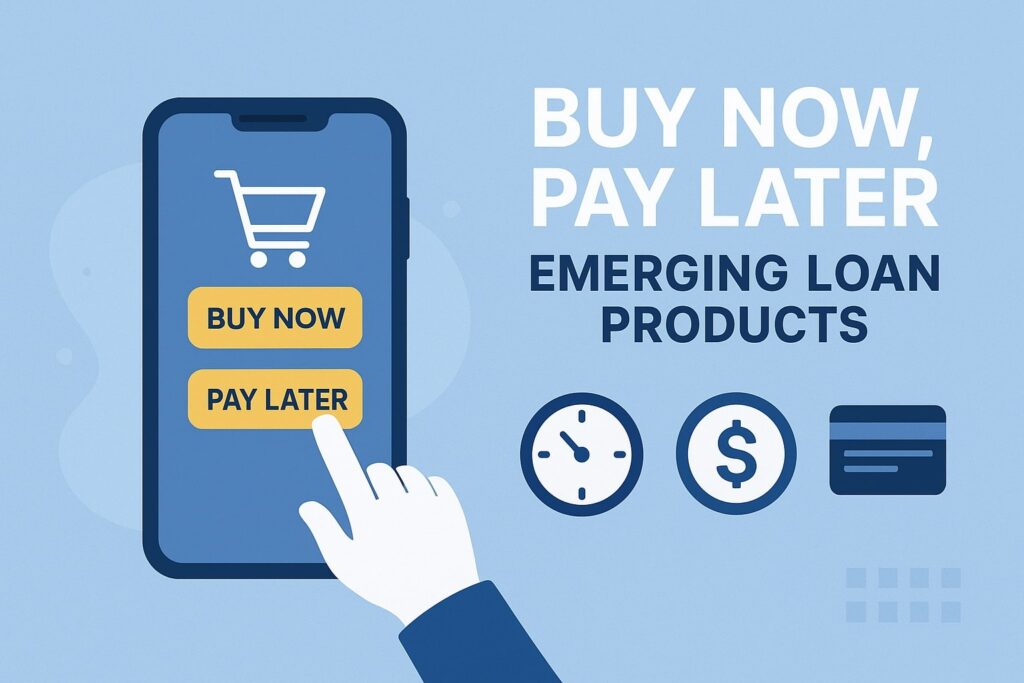
One of the most visible trends in consumer finance is the growth of Buy Now, Pay Later (BNPL) programs. BNPL loans allow shoppers to split purchases into a few installments, often interest-free.
They have proliferated on e-commerce sites and mobile apps. In the U.S., adoption climbed rapidly in 2021–2022: according to CFPB data, 21.2% of consumers with credit records used BNPL in 2022, up from 17.6% in 2021.
Many BNPL borrowers were “heavy users” – about 20% of BNPL users originated more than one loan per month, and the typical BNPL user took out ~9 loans per year.
Younger consumers dominate BNPL: for 18–24 year-olds, BNPL debt made up roughly 28% of all their unsecured credit in borrowing months, versus an average of 17% for all age groups.
However, BNPL’s explosive growth may be slowing. Bank of America Institute reported that BNPL use among its customers grew only modestly in early 2024: the share of BofA accounts with a BNPL payment rose just 0.5 percentage points (versus a 1.0 point rise the prior year).
In other words, BNPL saturation appears high, and merchant adoption is maturing. Moreover, regulators are pushing for BNPL lenders to adhere to traditional credit-protection rules: the CFPB in 2024 clarified that BNPL providers must afford consumers rights similar to credit cards. This could lead to more stringent underwriting or reporting of BNPL balances.
Beyond BNPL, other alternative credit products are emerging. Some fintechs offer earned-wage-access or “advance” accounts for small immediate needs (e.g. daily expense apps that advance a few hundred dollars of your upcoming paycheck).
Others offer subscription-based credit lines (e.g. neobank overdrafts with a flat fee). Traditional payday lenders have pushed into online channels. Regulators are monitoring all these variants (often classifying them as “credit” under law).
The takeaway is that lenders are experimenting with new loan formats to meet consumer demand for flexibility, but these products will come under growing regulatory scrutiny in 2025.
Changing Borrower Demographics and Behavior
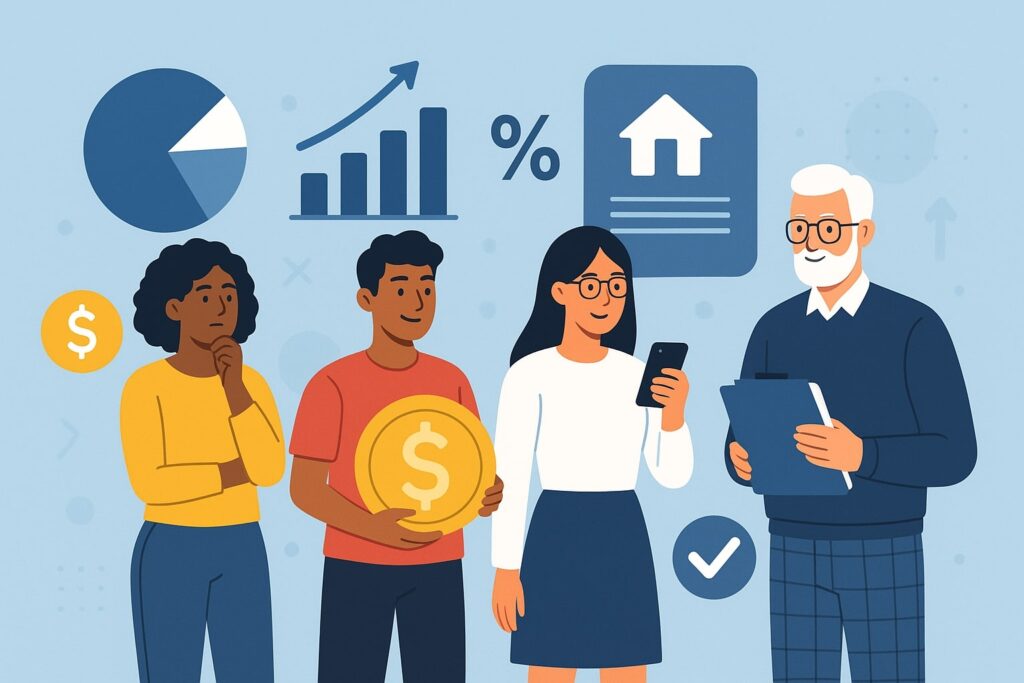
Online lending is reshaping who gets credit and how. Younger and underbanked borrowers are major beneficiaries of digital finance. Millennials and Gen Z have shown high BNPL and fintech usage, while older consumers are catching up slowly.
For example, BNPL adoption in 2024 was highest (around 39–41%) among consumers aged 16–34. Similarly, fintech personal loan platforms often target near-prime borrowers overlooked by banks.
Recent research indicates that from 2021–2023, fintech lenders drove most of the growth in loans to below-prime consumers. Lenders are leveraging alternative data (like utility and rent payment histories) to qualify borrowers without full credit files.
On the business side, many small businesses that struggled to get bank financing during the pandemic turned to fintech lenders. Online SMB lenders (like Kabbage/BlueVine, OnDeck, StreetShares) expanded their customer base in this period.
Even though most small-business lending is still done by banks, surveys show growing acceptance of fintech in the SMB loan process. The FDIC’s 2024 survey found roughly half of banks were using or considering fintech tools for small-business lending.
Small banks often partner with fintechs to streamline applications, while large banks may build in-house online SMB platforms.
Importantly, however, the FDIC noted that personal relationships remain key: most banks do not allow fully online SMB loan applications, and continue to rely on branch visits to screen borrowers. In sum, fintechs are making inroads for smaller business loans, but human oversight and local branches still play a major role in SMB lending.
Competition: FinTech vs. Traditional Banks
The rise of online lending has intensified competition between fintech firms and incumbent banks. In the low-interest-rate era of the 2010s, many fintech lenders flourished by offering unsecured loans to consumers outside prime credit tiers.
They captured business by using technology and alternative data to underwrite loans quickly and at scale. However, the macro environment change of 2022–2023 (sharp rate hikes and economic pressure) has altered the landscape.
Fintech platforms saw funding costs rise (they borrow at higher rates than banks), and they pulled back on originations to control risk.
Indeed, a New York Fed analysis (reported in late 2023) found that fintech loan originations peaked in 2022 and declined in 2023.
Fintechs originated an average of ~1.14 million unsecured personal loans per quarter in 2023, down from 1.90 million per quarter in 2022.
Correspondingly, fintechs’ share of new unsecured loan originations fell: by mid-2023 fintechs accounted for only about 26.5% of all such loans, whereas in early 2022 that share had been much higher.
Banks and credit unions thus regained ground; by Q2 2023 banks were originating over 50% of new unsecured personal loans. In other words, as borrowing costs rose, banks’ low-cost deposits allowed them to finance loans more cheaply, squeezing fintech margins.
Looking ahead, competition will continue on multiple fronts. Traditional banks are rapidly upgrading their digital lending platforms to keep customers.
Many large banks now offer online personal loans, digital mortgage applications, and automatic underwriting similar to fintechs. Some banks partner with or acquire fintech startups (e.g. branchless banks or lending marketplaces) to expand offerings.
Non-bank lenders, in turn, are diversifying products (adding deposit-like savings accounts, for example) and improving customer service to retain borrowers.
Meanwhile, Big Tech and fintech adjacents have begun dabbling in credit – for example, Apple’s and Amazon’s co-branded credit cards, Google’s payment ventures, and various BNPL startups acquired by payment networks.
The net effect is a crowded marketplace, with incumbent banks, fintech startups, and tech companies all vying to finance consumers and businesses.
Risks and Challenges
Alongside growth, online lending faces headwinds and risks:
- Credit Risk and Delinquencies: As loan volumes expand, defaults may rise. Anecdotal industry reports in 2023 noted increasing delinquency rates for unsecured personal loans, especially among subprime borrowers.
Fintechs have been tightening credit criteria: many firms scaled back lending to low-credit borrowers in 2023 to protect capital.
Borrowers with heavy BNPL usage were found to also carry high balances on credit cards and other debt, suggesting that overextension could lead to defaults. Lenders will monitor portfolio performance and may pull back if economic conditions deteriorate. - Cybersecurity and Fraud: Online lending relies on digital channels, making it vulnerable to hacking and identity fraud. Cybercriminals increasingly target online applications and disbursement channels.
A security breach or loan fraud wave could undermine trust. Regulators (OCC, FTC) have issued guidance emphasizing robust cybersecurity controls.
Lenders are investing in multi-factor authentication, anti-fraud analytics, and KYC checks, but this remains a critical operational challenge. - Regulatory Compliance: We discussed many upcoming rules above. Nonbank lenders must ensure they track a shifting regulatory environment.
For example, small-dollar loan caps in some states may force fintechs to exit or restructure products.
The industry is also watching proposed FTC rulemakings on nonbank lenders’ fair lending and consumer protection. Overstepping a regulation (even unintentionally) could invite enforcement actions. - Market Saturation and Profitability: Some observers warn of a “shakeout” if too many online lenders chase limited customers. With originations slowing and capital costs up, only the most efficient platforms may thrive.
Investors are demanding returns, so unprofitable lender startups could face consolidation or shutdown. Competition might drive down interest rates (to compete with bank loans), further squeezing margins.
The U.S. Online Lending Landscape
Geographically, online lending is strong across the U.S. but is concentrated in fintech hubs. One analysis estimated the Northeast (New York, New Jersey, etc.) accounted for nearly 39% of U.S. digital lending revenues in 2024, largely reflecting the many fintech firms and money centers there.
The West Coast (Silicon Valley) also has many fintechs, and is projected for the fastest growth (18%+ CAGR through 2030) in digital loans.
Many large online lenders are headquartered in major cities, but their customers are nationwide – a borrower in Texas or Florida can just as easily use an online lender as someone in California, thanks to digital channels.
State regulations do create differences. Some states (e.g. South Dakota, Delaware) have more permissive interest-rate rules, attracting fintechs via partnership loans.
Others (like New York and Connecticut) have very strict rate caps, limiting nonbank lenders. As a result, many fintech loan terms and product availability still vary by state. Companies continue to lobby for more uniform rules or national charters to ease this patchwork.
Despite these variances, the U.S. market remains one of the world’s largest digital lending markets. The combination of sophisticated financial infrastructure, a large consumer base, and investor capital makes the U.S. central to global online lending trends.
For global context, by contrast, China and India have even larger P2P lending footprints (though recent regulations have curtailed some activity there), and Europe has pioneered open-banking-driven models.
In any case, what happens in the U.S. often sets benchmarks for compliance and innovation in online lending worldwide.
Future Outlook and What to Watch
In summary, the trends to watch in online lending for this year include:
- Continued technology innovation: AI and data analytics will further penetrate underwriting and risk management. We can expect more automation and possibly the rise of fully automated “robo-lenders” for routine loan types.
- Interest-rate and macro effects: If the Federal Reserve signals rate cuts or if economic growth slows, loan demand and risk profiles will shift. Online lenders typically have less diversified funding, so the cost-of-capital environment will strongly affect their strategies.
- Evolving regulations: Watch for new state and federal rules on fintech lending, especially any BNPL-specific laws or updates to usury statutes. These could reshape product offerings (e.g. requiring installment-based repayment options or caps on fees).
- Competitive moves: The largest banks may launch new digital lending brands or acquire fintech startups. Big Tech (Apple, Amazon, Google) may expand credit offerings. Traditional finance institutions (credit unions, banks) may form more “lending alliance” networks to compete with fintech.
- Market consolidation: Weak or overleveraged online lenders may merge or exit. We might see some big fintech acquisitions by banks or vice versa.
Overall, online lending in the U.S. is at an inflection point. While the underlying market continues to grow, especially for consumer and SMB credit, the post-pandemic economic climate requires online lenders to prove they can lend profitably and responsibly.
Borrowers and investors should keep a close eye on the data – for example, quarterly origination and delinquency rates from the New York Fed’s consumer credit reports – to gauge where the market is heading.
For small businesses, the 2024 FDIC survey suggests that fintechs will continue gaining ground, but face competition from community banks emphasizing relationship lending. For consumers, BNPL is maturing and mainstream banking products are becoming more digital.
Key Takeaways: Online lending is growing rapidly, but new challenges are emerging. Fintech lenders should leverage AI and alternative data while ensuring compliance with new rules. Traditional banks should accelerate digital transformations to defend share.
Consumers benefit from more choices, but should understand the terms (interest, fees) of online loans. Regulators will likely demand more transparency.
In short, the digital lending space remains dynamic – this year’s winners will be those who combine speed and innovation with robust risk management and regulatory compliance.
FAQs
Q: What exactly is “online lending” and how is it different from traditional lending?
A: Online lending (or digital lending) refers to loan products originated and managed primarily through digital platforms, rather than in person at a bank branch. This includes peer-to-peer lending websites, fintech lending apps, neobanks, and even bank loans applied for online.
The key differences are speed and convenience: online lenders often use automated credit checks and funding processes, enabling quicker approvals (sometimes within minutes or days) compared to traditional bank loans.
Online lenders may also tap non-traditional data (like mobile payment history) to qualify borrowers. However, regulatory protections (e.g. Truth in Lending Act disclosures) generally apply to both.
Q: Who benefits most from online lending trends?
A: Online lending has broadened access to credit for underserved segments. Younger borrowers and those with limited credit histories often benefit because fintech lenders use new data for underwriting.
Small businesses also gain faster access to capital through online small-business loan platforms. At the same time, tech-savvy consumers enjoy the convenience and speed of applying via apps.
However, borrowers should compare costs: sometimes online loans (especially small-dollar or BNPL loans) carry higher fees than bank loans.
Q: Are online lenders regulated?
A: Yes. In the U.S., most online lenders are regulated by a combination of federal and state laws. Federally, products must comply with laws like the Equal Credit Opportunity Act, Truth in Lending Act, and Consumer Protection laws enforced by the CFPB.
Many fintech lenders also hold state lending licenses (like money-transmitter or consumer finance licenses) and must obey state interest-rate limits and reporting requirements.
The CFPB has recently signaled it will treat online lenders (including BNPL providers) like any other lender under consumer protection rules. So online lending is subject to extensive oversight, even if offered through an app.
Q: What is Buy Now, Pay Later and is it safe?
A: Buy Now, Pay Later (BNPL) is a payment option letting consumers split purchases into several interest-free installments, typically 4 payments over a few weeks or months. It’s offered at checkout by services like Affirm, Afterpay, or Klarna.
The risk is that borrowers may accumulate many BNPL loans simultaneously – indeed, studies found over 60% of BNPL users had multiple concurrent BNPL loans. Also, BNPL doesn’t always report to credit bureaus, so defaults might not show on your credit report (for now).
Starting in 2023, regulators began requiring BNPL firms to provide certain consumer protections (like clear disclosures) similar to credit cards.
BNPL is generally considered “safe” if you use it responsibly (as a budgeting tool), but it can lead to overspending. Always read the terms and be aware of late fees.
Q: How do I compare online lenders to traditional banks?
A: Online lenders can offer competitive or sometimes higher interest rates than banks, depending on credit. They shine in convenience: faster digital applications and approvals.
They may approve loans for people with lower credit or alternative profiles, since they use different criteria. Banks often have lower rates (due to cheaper funding) but may have stricter credit requirements.
When choosing, compare annual percentage rates (APRs), fees, loan amounts, and repayment terms. Check lender reviews and look for clear disclosures.
For larger or specialized loans (home mortgage, auto loans), traditional banks and credit unions still hold a major share, but many banks now offer online applications too.
Q: Will traditional banks lose out to online lenders?
A: It’s unlikely banks will disappear, but competition is stiff. Banks have regulatory advantages (access to deposits) and longstanding customer relationships. Many banks are fighting back by digitizing their loan processes and partnering with fintechs.
The future might see more collaboration: for example, banks licensing fintech technology, or fintechs acting as loan originators for banks. In some areas (especially small loans and convenience markets), fintechs may permanently take share.
In others (like large mortgages), banks will remain dominant. Overall, expect banks and fintechs to co-exist and compete, with consumers benefiting from better technology and more options.
Q: What should businesses and consumers watch for this year?
A: Keep an eye on interest rates and the economy: changes here affect borrowing costs and defaults. Watch regulatory news – e.g., any CFPB announcements on lending practices or state bills on BNPL and payday lending.
On the technology front, look for new AI underwriting tools or fintech partnerships (banks investing in fintech, new credit cards from tech firms, etc.). For consumers: new loan products (like flexible installment plans) may appear, so read terms carefully.
For businesses: online small-business lending should become faster with new underwriting (like using real-time revenue data), but be prepared to provide digital documentation. In sum, be aware of how online lending options evolve and evaluate them against traditional financing.
Each of these trends underscores that online lending is reshaping credit markets. By staying informed – whether you’re a fintech innovator, an investor, or a borrower – you can navigate the changing landscape and make smart decisions about digital credit options.